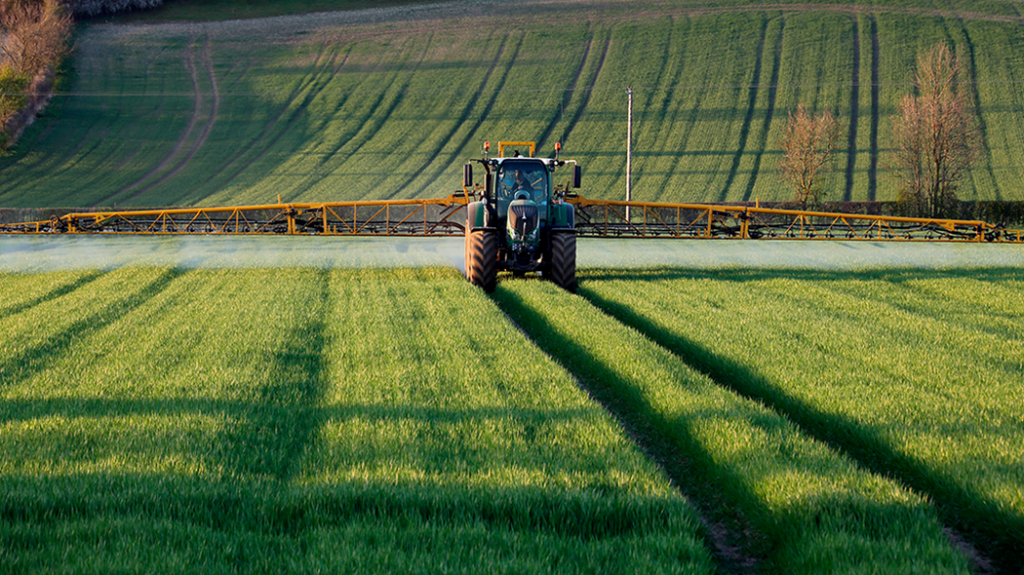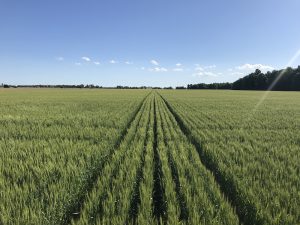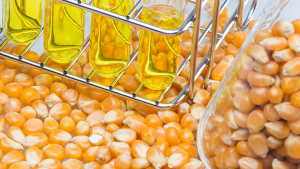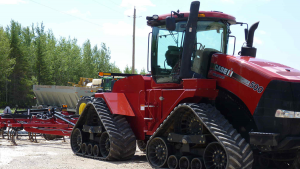Getting the most from your nitrogen
REDUCING ECONOMIC AND ENVIRONMENTAL COSTS

THE PRICE OF nitrogen fertilizer has risen to double, if not triple, the standard multi-year average. With costs so high, ensuring the nutrient is applied as efficiently and effectively as possible is critical.
In a presentation delivered this past January, corn specialists Daniel Quinn and Jason DeBruin — associate professor of agronomy at Purdue University and field experimentation research scientist with Corteva, respectively — highlighted a variety of considerations for growers to lower the burden of fertilizer on both the environment and their bottom line.
APPLICATION AND TIMING
Achieving maximum yield does not equate to the highest profit, says Quinn, since corn yield responses flatten as nitrogen rates increase.
A 30-bushel yield gain might be the result of 100 pounds of applied nitrogen per acre, for example, whereas 150 pounds only brings an additional 15-bushel gain. Go high enough, and nitrogen fertilizer brings little beyond financial and environmental costs. Optimizing returns is a matter of calculating fertilizer benefits to grain price.
Inputs must reach the crop at the right time, of course. While unavoidable in some cases, Quinn suggests growers avoid fall or early spring application since there is more time for loss. If nitrogen is applied in the fall or earlier in the growing season, nitrification inhibitors can be a beneficial addition.
“A urease inhibitor can buy you seven to 14 days before volatilization,” he says, referring to surface-applied nitrogen specifically. Quinn adds soil temperatures below 50 degrees Fahrenheit (10 degrees Celsius) bring additional risk of loss.
Critically, only 25 pounds of nitrogen is absorbed by corn between the VE and V6 stage, meaning a front-loaded nitrogen program leaves more unutilized nutrient in the field for a longer period of time. Split application is thus the preferred method. Reducing the initial application and supplementing with another during the crop’s peak uptake period significantly increases yield potential, while reducing loss.
Weather is also an unpredictable factor.
“Nitrogen is always cycling in the soil. It’s really difficult to predict…It’s so environmentally dependent. It’s a very leaky system,” says Quinn. He later reiterates split applications may not always bring yield increases, but the practice consistently minimizes the risk of loss while improving nitrogen use efficiency.
DIFFERENT PRODUCTS, DIFFERENT BENEFITS
Anhydrous ammonia is considered the safest choice for fall and early season application because it’s the slowest to convert to nitrate. Urease inhibitors can help slow the process even further, reducing leaching risks.
Quinn adds inhibitors can similarly provide an extra seven to 14 days to the effective period of dry urea — a compound more prone to volatilization, particularly in no-till and high residue systems. Incorporating dry nitrogen into the soil, however, removes the need for inhibitors.
Urea Ammonium Nitrate (28 or 32) can be employed in conjunction with both urease and nitrification inhibitors, but proper timing and placement can eliminate the need for inhibitors.
IS HYBRID SELECTION IMPORTANT?
As described by DeBruin, the genetic potential of corn hybrids has steadily increased over the better part of a century — but “there’s no free lunch,” in that nitrogen requirements have increased in kind. The trend is expected to continue, meaning an additional 0.69 pounds of nitrogen per acre requirement year over year.
“As yield increases, there will be additional need for nitrogen. That doesn’t mean we need to dump a bunch on it,” says DeBruin. Like Quinn, he believes careful, calculated application is the key.
Whether there are notable nitrogen response differences between hybrids is a matter of some contention, however, partly because of the inherent difficulty in matching yield gains to early positive responses to the nutrient. DeBruin’s research has shown notable differences in the past, but replication has proven difficult.
“We don’t have enough info and prediction power to make good claims,” he says. “Yes, you can document it at specific locations and years, but if you try to replicate it over a number of locations and years it goes away.”
Consequently, hybrid selection should not be considered a critical management strategy with regards to nitrogen.
“Go for a top yielding hybrid and manage your nitrogen relative to the environment,” says DeBruin.
HOW NITROGEN IS LOST
- Excessive rain or concentrated moisture (ponding) causes leaching.
- Hot and dry conditions bring insufficient mineralization and plant uptake, increasing the risk of volatilization.
- High carbon levels from heavy field residues cause higher rates of nutrient immobilization.


























